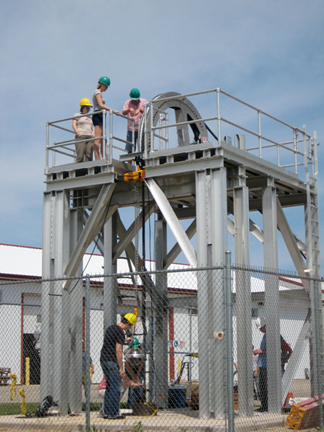
summer training at the UW PSL in Stoughton, WI. Image: E. Malkus
Since 2009, WIPAC has partnered with the Knowles Science Teaching Foundation (KSTF) and PolarTREC to send high school math and science teachers to the South Pole, working closely with scientists and engineers on the IceCube Neutrino Observatory.
KSTF provides fellowships to professionals in science, math, and engineering who want to become teachers. They recently announced an exciting new initiative to help teachers make engineering a part of math and science courses.
The KSTF Engineering Task Force consists of 19 senior fellows working with Dr. Dina Portnoy, the Director of the Senior Fellows Program. Casey O’Hara (PolarTREC 2009) is part of the leadership team that helped develop the following list of goals for the task force:
– To identify and evaluate engineering resources, and to make the case for the kinds of experiences teachers need to build their capacity to implement engineering design practices in their curricula,
– to provide resources, dialogue, and support for teachers to increase their capacity for incorporating engineering practices,
– and to facilitate and better understand improved student learning outcomes and knowledge of engineering through the transformation of classroom practices.
The task force will work within the national Next Generation Science Standards, creating resources that will help teachers bring engineering concepts into the classroom.
Liz Ratliff (PolarTREC 2012) leads a subgroup that will develop a usable model of engineering design based on the new science standards. Other senior fellows working on the project who have close ties to IceCube are Katherine Shirey (PolarTREC 2010), Jim Lane, and Scott Murphy.
KSTF Press Release: First Meeting Held to Explore Integration of Engineering in Mathematics and Science Courses
